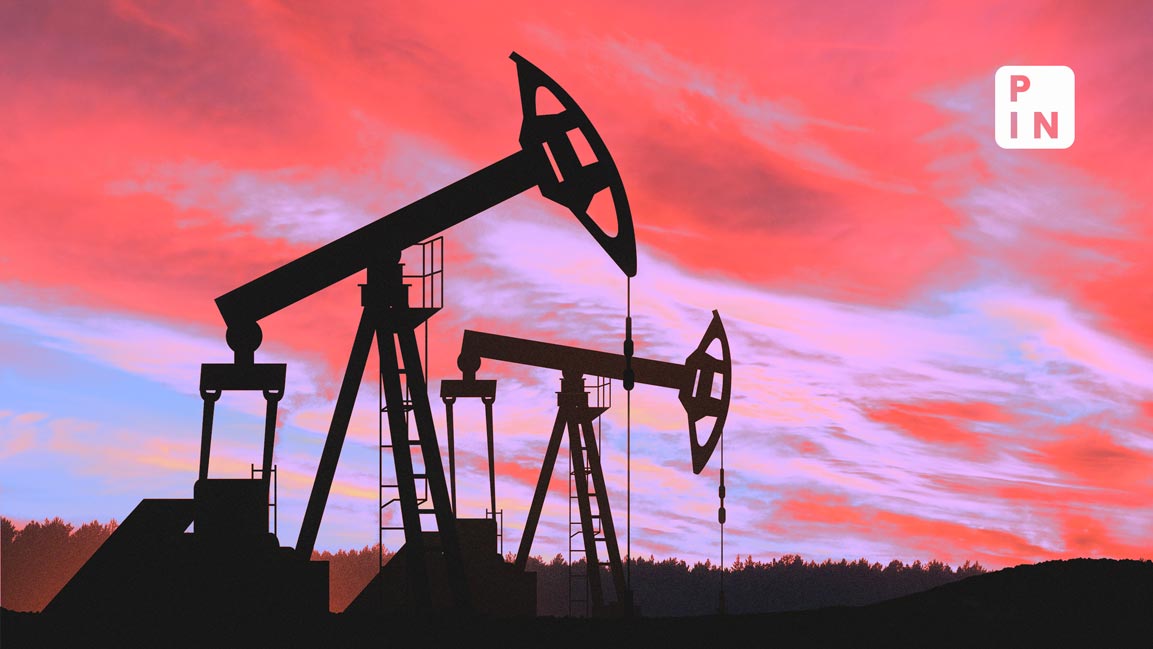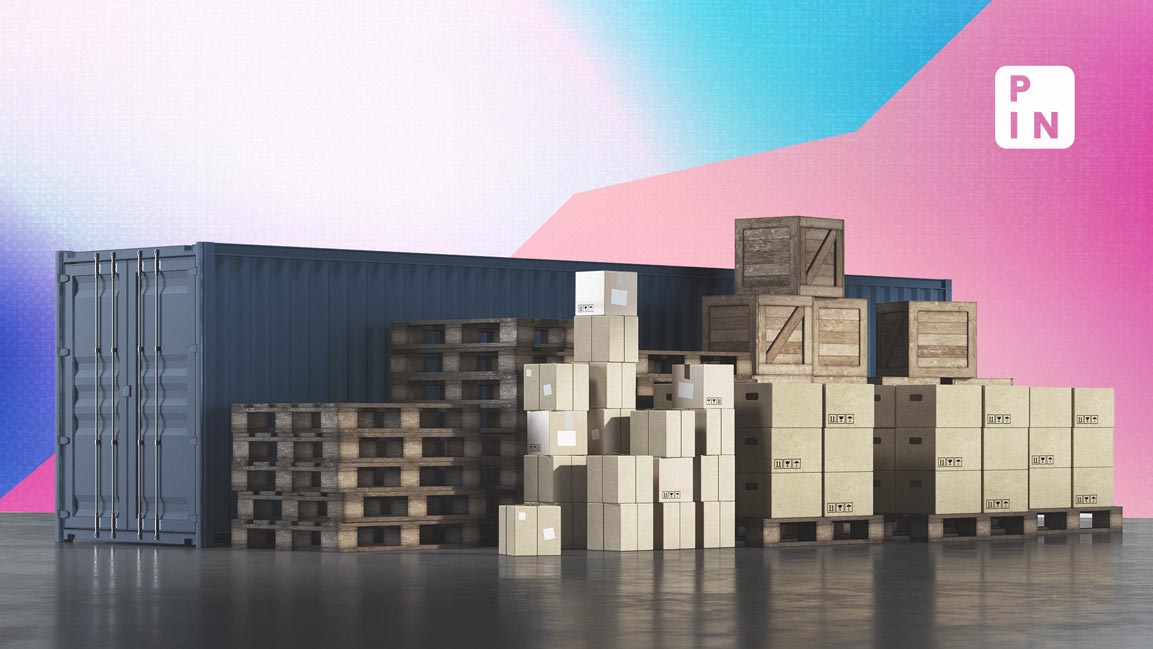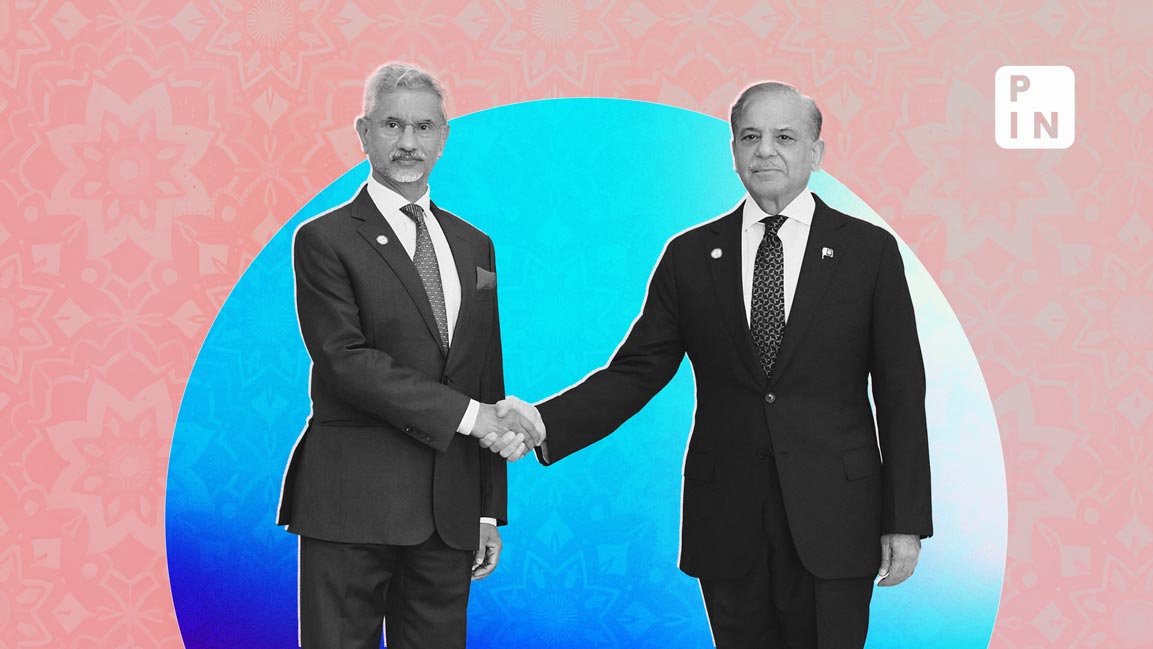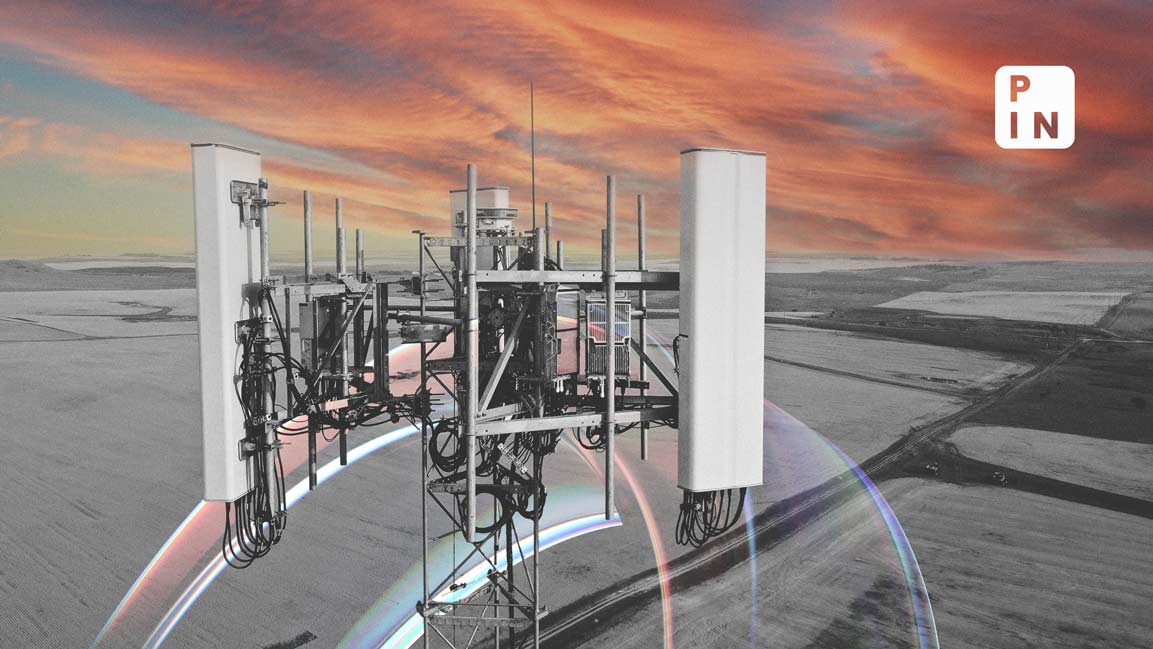- | 6:30 pm
Buddha relics have sparked goodwill for India among Thais: envoy Nagesh Singh
Ambassador Nagesh Singh also sheds light on opportunities that Indian businesses can tap, PM Srettha Thavisin's plans to visit India, and the status of the link between UPI and PromptPay
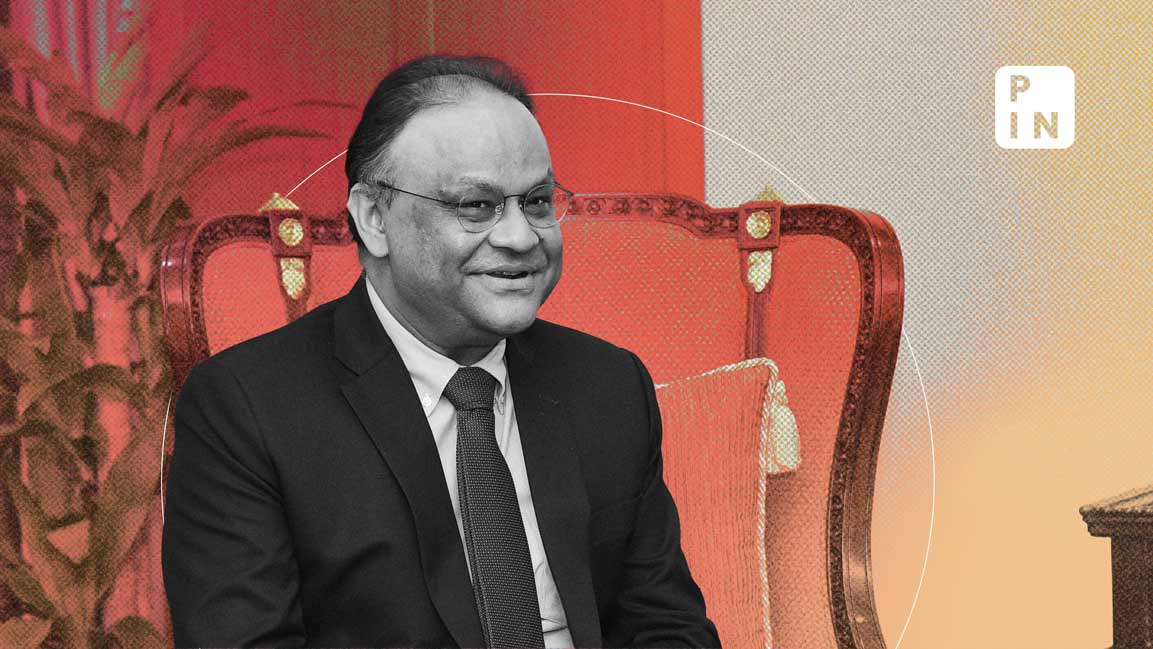
The 26-day exposition of the relics of Buddha and his disciples, Sariputra and Maudgalyayana, has generated tremendous goodwill for India and Indians in Thailand, Ambassador Nagesh Singh said in an interview.
The relics, treated as ‘state guests’ in Thailand, were flown by a special Indian Air Force aircraft on 22 February, following Bangkok’s request for a temporary enshrinement to commemorate King Maha Vajiralongkorn’s 72nd birth year. The relics returned home on Tuesday, 19 March.
Ambassador Singh also highlighted “the grace and swiftness” with which the Thai government had moved to restore diplomatic trust between Thailand and India following the controversy at the World Trade Organization (WTO) ministerial conference in the United Arab Emirates earlier this month.
India had lodged a diplomatic protest with Thailand following remarks made by the then Thai ambassador to the WTO over India’s rice procurement program, following which she was replaced.
The ambassador also shed light on the opportunities that Indian businesses can tap in the Southeastern nation, Thailand Prime Minister Srettha Thavisin’s plans to visit New Delhi, India’s influence as a soft power in the region, and the status of the linkup between India’s Unified Payments Interface (UPI) and PromptPay.
Edited excerpt:
What was the effect of India sending Lord Buddha’s relics to Thailand on diplomatic relations?
The arrival of the relics of Lord Buddha and his disciples—Sariputra and Maudgalyayana—was remarkable. India and Thailand share a multifaceted relationship, and the bedrock of this relationship is the people-to-people connection. Two Thai cities—Chiang Mai in the north and Ubon Ratchathani in the east that borders Cambodia and Laos—saw people from even neighboring countries thronging in to venerate the relics and offer their prayers.
Thailand is a country built on faith. Bangkok had requested for the relics for temporary enshrinement to mark the 72nd birth year of the present king, Maha Vajiralongkorn of Thailand. It took us 6-7 months to process this request as the relics are very precious, and we also follow a standard operating procedure in terms of how often the relics can go out of the country. Lord Buddha’s relics are treated at a level higher than the head of state’s visit. The relics had been sent to Mongolia in 2022. There used to be a gap of three years before they were sent again to another country, but the leadership in New Delhi obliged this request.
So far, 1.2 million people have offered prayers in Sanam Luang, the royal park in Bangkok; another 500,000 people visited when the relics were kept on display in Chiang Mai, and 800,000 people offered prayers in Ubon Ratchathani. On 13 March, 240,000 people offered their obeisance in just one night.
The Thai people were emotional. A crowd of devotees was teary-eyed as the king, queen, and the prime minister led the ceremony for the temporary enshrinement. I was told that when the relics were kept in Bangkok, the shopkeepers around Sanam Luang refused to accept money from Indians, saying that they had given us the Lord.
I have not seen such an impact on people anywhere in the world in my 29 years of service. Sending relics has generated tremendous goodwill for India, and we have to build on this.
While you emphasize the significance of people-to-people ties, considering the evolving regional dynamics, what benefits do these connections bring?
People-to-people connect is not an end in itself. It’s a facilitator. For example, last year, 1.6 million Indian tourists came here. A significant number of Thai people visited India. When tourism happens, businesses follow because people get comfortable with each other; they realize how similar we are.
To cite an example, some Indian business people came on a holiday to Phuket and suddenly decided to set up a whole, exclusive marina there. Somebody comes here, while walking around somewhere, meets somebody, and decides to set up a data center in the Eastern Economic Corridor. So all these things are facilitators for bilateral relations, what you call complex relationships, whether it’s trade and investment, defense and security, or political relationships.
Today, connectivity is not just about physical connectivity; but also about academic exchanges, knowledge networks, digital connectivity.
What impact has the controversy at the World Trade Organization (WTO) in Abu Dhabi last month over rice procurement had on bilateral relations?
The former Thailand ambassador to WTO questioned our public distribution system, not just our rice export policy. But when we asked the government of Thailand if this was its official position, they showed grace and swiftness, and cleared that it was not the government’s position and immediately recalled their diplomat.
Deputy prime minister/commerce minister Phumtham Wechayachai had also issued a letter saying that the diplomat’s views were not a reflection of the Thai government and our (India-Thailand) relations were too important. The Thais are very gracious people.
Do you see the visa-free entry for Indian citizens visiting Thailand getting extended after May?
Tourism in Thailand is a crucial sector. 18% of the Thailand’s GDP comes from tourism. In 2019, before Covid-19, they received 40 million tourists. Last year, Thailand welcomed 28 million. So, for them, this is a core sector, and Indians are an important source of tourism. Their top source countries are Malaysia, China, India, Korea, and Russia. The good thing about India, from a Thai perspective, is that Indian tourists are big spenders, unlike the Chinese, who are called ‘zero-dollar’ tourists; all of the money is paid in China to their own local travel companies who have arrangements. So money transfer doesn’t happen. Knowing how aggressive the Thais are in promoting tourism, I wouldn’t be surprised that it’s extended, to begin with, more than six months, and then we’ll see how we take it forward. However, this is my assessment; the Thai government will take a final call on this.
This also depends on reciprocity, as seen in their visa-free agreement with China. The Thai prime minister discussed similar arrangements with European countries and had asked us for visa-free access. India, which typically doesn’t offer visa-free travel, except to two countries (and is planning to end it with one), suggested we would look at easing the E-visa process and make it gratis. In some ways, e-visa is easier because you preload the information rather than arrive at the airport and get pushed around. The specifics are still being finalized.
What is the status of the long-term visa facility for foreign investors in Thailand?
I’m unaware of the exact number of Indian investors who have availed of this facility. Indian investment in Thailand is not very substantial. The Tatas and the Birlas have their plants here. The other Indian companies who have come to Thailand, a lot of them are not into manufacturing, but have sales offices here. In India, 15 -16% of GDP comes from manufacturing. In Thailand, 34% of GDP comes from manufacturing. Thailand benefited from the first outsourcing wave that started after Japan became expensive in the late 1960s and the early 1970s.
This historical shift has made Thailand an attractive destination for foreign investment, supported by its strong infrastructure, favorable business environment, and strategic trade agreements like the RCEP. So setting up a shop here opens up the market. With India’s Act East policy promoting closer ties with ASEAN countries, Indian investments in Thailand are expected to grow.
What steps are being taken to minimize the trade deficit? Both countries have set a goal of achieving $35 billion bilateral trade by 2027-28?
In 2022, bilateral trade was about $17.7 billion, according to Thai statistics. It was $10 billion in exports to India and $7.7 billion in imports. This year, it’s about $15 billion-plus. What is happening is that this deficit is about $5 billion, as per last year’s data. The point is that the industry must be competitive in a global market. To resolve non-tariff barriers, we are having joint trade committee meetings. We had one such meeting last year and will be meeting again.
The ASEAN-India Trade in Goods Agreement (AITIGA) is being reviewed, and Thailand is very supportive. Two rounds have happened. The third round is next month. By early 2025, we will complete this review, because India has had grievances, and when it was signed, our economy was different and has changed in the past 15 years.
And then there is also an early harvest scheme for India-Thailand bilateral trade. We had 84 items. We can look at a more comprehensive FTA after the (AITIGA) review. So, let’s see how it pans out. These trade negotiations are protracted and challenging, but we will get there. In Thailand, they have also realized the dynamism of our economy and the size of our market. So, there’s great interest in reaching out to India at the political and business levels.
Thai PM Srettha Thavisin is on the cover of the latest issue of Time magazine. Thavisin is roaming around the world seeking investments. Is Thavisin planning a visit to India? And, given that a few individuals own many companies across sectors in Thailand, what are the opportunities for Indian investors?
So, Prime Minister Srettha was CEO of Thailand’s largest real estate company (Sansiri). He’s new to politics. The Thai economy has slowed down post-covid. Goods exports, which are around $280 billion a year and significant for a country of its size, have slowed. So PM Srettha has said he will go around as ‘salesman’ for Thailand, not just China and Russia. He was in Germany, France, and Australia. He went to the APEC summit in the US and to Davos, where he met Gautam Adani as well. He is inviting countries to invest in the infrastructure project for the land bridge they are planning in south Thailand, connecting the Gulf of Thailand with the Andaman Sea. So he’s going all over. He’s also a great friend of India and has expressed his interest to visit India.
Thailand’s biggest strength is manufacturing electronics and electronic appliances, and India’s strength is in IT, IT-enabled services and digital transition. Thais are very impressed by Indian expertise in these domains. The other day, I was with the Thai Post CEO and their delegation who had visited India Post; they were impressed by digital payments and direct benefit transfers.
In manufacturing, Thai businesses want to manufacture light commercial vehicles and agricultural equipment. Thailand’s government offers a lot of incentives to Indian companies to set up a shop here. Skilled labor in Thailand is an issue now because of an aging population. Still, they are also looking at mobility agreements, where businesses can bring in skilled labor if they make foreign direct investments. Thailand is a very advanced, upper-middle-income country and an advanced economy. There is tremendous scope in hospitality and retail sectors. Thailand is the second largest economy in ASEAN, but it’s only our fifth largest trading partner. Although geographically, it’s closer to us than the Philippines or Indonesia. So, there is a problem, and both sides are working to resolve those problems.
Eventually, when Myanmar’s situation stabilizes, the connectivity will improve through the India-Myanmar-Thailand trilateral highway. Under BIMSTEC (Bay of Bengal Initiative for Multi-Sectoral Technical and Economic Cooperation), we are looking at near-coastal voyages. Indian naval ships from Vizag to Phuket come in four days. But my baggage from Delhi came after a month because it went to Kandla in Gujarat. From Kandla, it went to Singapore before reaching here. But those things are being worked. So even if you want to go on a cruise, you have to go to Singapore first and then come to Phuket and other places. Why can’t we have connectivity between Port Blair and Phuket? Port Blair is closer to Phuket than it is to Chennai. The Indian and Thailand governments know this. Exchanges are happening.
To give you another example, we catch only about 10 -12% of tuna of our capacity near the Andaman cost, and we need to catch up. Thailand is strong in food processing. Recently, we had a delegation from Andaman and Nicobar here. They are willing to train our fishermen and set up post-harvest technology for tuna, which is a valuable product.
Thailand is also planning a land bridge from Chumphon in Gulf of Thailand to Ranong in Andaman Sea. The project will need an investment of $30 billion. It is still in the conceptual stage, and locals from the area have raised concerns. This 95km connectivity project will join the two ports, a high-speed rail network, gas-oil pipelines, and highways. India is also looking at setting up a transshipment hub in the vicinity of the Greater Nicobar region. There is also the multimodal India-Middle East Europe Economic Corridor. So the prospects for connectivity from Southeast Asia to Europe are immense.
Thailand is looking to build an airport near Phangnga in Phuket. They are happy to work with us. The embassy has shared details with New Delhi. Our companies must be aggressive to get the contract.
Indian cinema has a massive audience in Thailand. How is India’s soft power status playing out?
When I arrived in Thailand, Gangubai Kathiwadi, starring Alia Bhatt, was a sell-out. Bhatt is a popular actress here, and Thai women were wearing saris like Gangubai. So, Indian cinema holds a soft power. South Indian cinema has greater appeal in terms of content and visual appeal. The Thai trade representative was in Mumbai recently. She met Sajid Nadiadwala, the president of the Indian Film and TV Producers Council (IFTPC). Nadiadwala also met PM Srettha. Thailand is very keen that Indian filmmakers come, as they used to earlier, and shoot films in the south in Koh Samui, Krabi and other areas.
There were talks of linking UPI with Thailand’s PromptPay. Where are we on this project?
It’s in the final stages. There was one issue, but the Reserve Bank of India and the Bank of Thailand have resolved it. It will likely be announced during the next VIP visit, maybe when the prime minister comes to India or our Indian PM’s visit to Thailand when the BIMSTEC summit happens.






